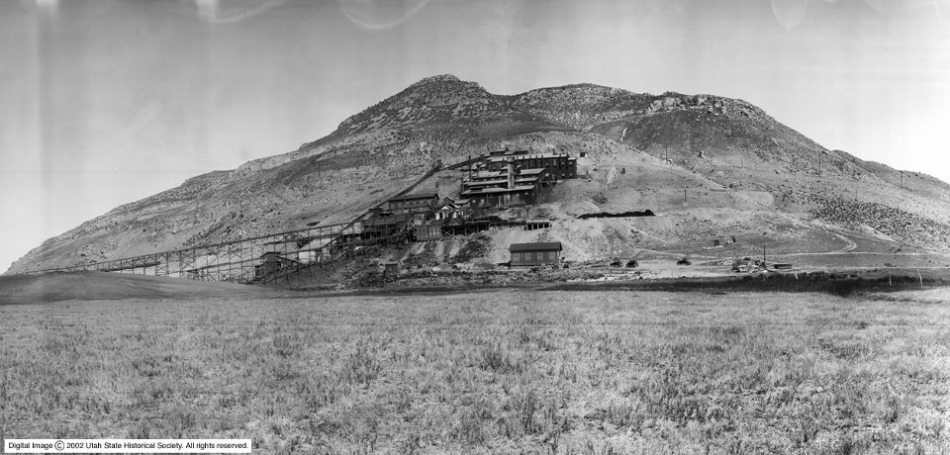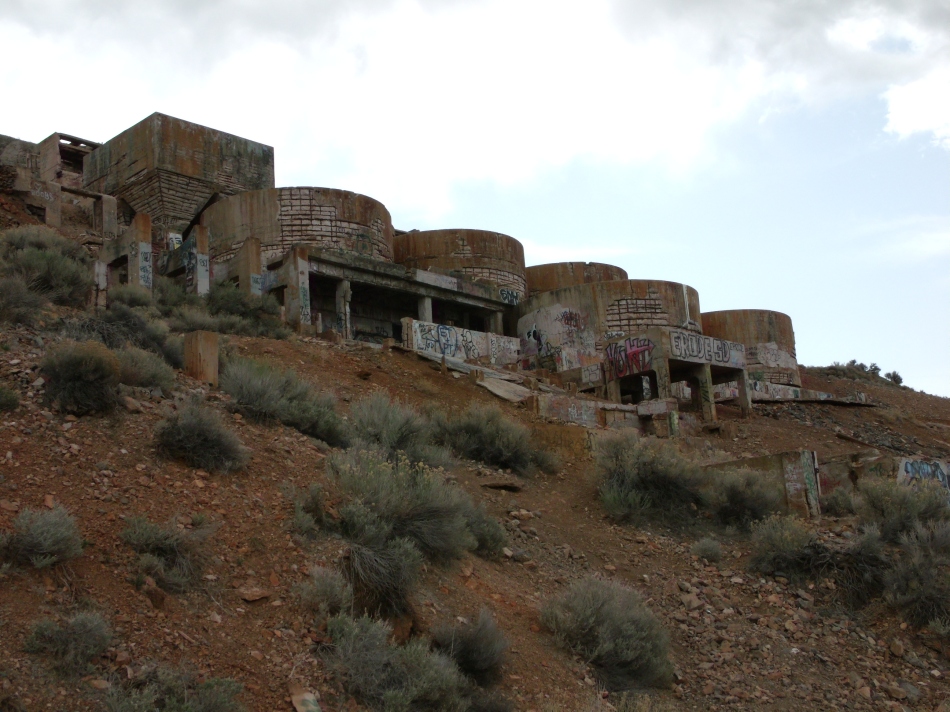Below is a picture of the mill in its heyday: (photo: Scott Brill)

The mill in 1971 (notice the utter lack of any graffiti):

The mill as it appears today (photo: Scott Brill):

The Tintic Standard Reduction Mill—also known as the Tintic Mill or Harold Mill—built in 1920, and only operating from 1921 to 1925, is an abandoned refinery located on the west slope of Warm Springs Mountain near Goshen, Utah, in the United States. Metals processed at the mill included copper, gold, silver, and lead, all of which were received from another millnear Eureka, Utah. The reducing process used was an acid-brine chloridizing and leaching process which became outdated, leading to the abandonment of the site in 1925. At the mill's highest productivity it processed 200 tons of ore yearly from the Tintic Mining District.
What remains of the mill are foundations for water tanks, crushers, roasters, iron boxes, leaching tanks, and drain boxes. The site dominates the surrounding landscape with its size and unique colors and shapes.
It was designed and built by W. C. Madge. It is significant as the only American mill using the Augustin process during the early 1920s.
It was listed on the National Register of Historic Places in 1978.
It has been speculated that the mill may be the contributor of heavy metal pollution in the Goshen Warm Springs which lie below it.
Source: Wikipedia.com
I had seen the remnants of the mill before, but finally recently took some time to look at it. In the original photograph of the mill above, you can see where the rail spur went north to connect to the main line (which today is also in disrepair, and not used anymore) nearby. The "main" line today, as seen nearby: (photo: Scott Brill)

Note the warm springs below, as shown from the mill (come at the right time of year, and you might catch sight of some fireflies, a rare sight in Utah): (photo: Scott Brill)

It's a short hike to the old refinery itself, and it is quite a fascinating place. Be careful of the dilapidated structure, snakes, etc., and bring plenty of water.